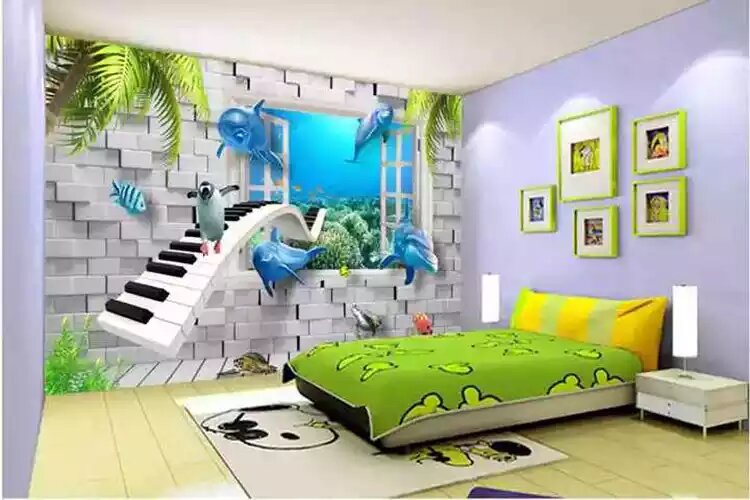When it comes to designing your child’s room, choosing the right wallpaper texture can make a big difference. Not only does texture add visual interest and depth to a room, it can also impact the overall mood and atmosphere. Here’s a guide to help you choose the right wallpaper texture for your child’s room.
Consider the room’s function:
Before choosing a texture of wallpapers for children’s room, think about how the room will be used. A child’s playroom might benefit from a playful texture that adds energy and excitement, while a bedroom might require a more calming and soothing texture for restful sleep.

- Think about the theme: If your child’s room has a specific theme, consider choosing a texture that complements it. For example, a nautical-themed room might benefit from wallpaper with a textured wave pattern, while a nature-themed room could incorporate a textured leaf pattern.
- Look at the colors: The colors of the wallpaper should also be considered when choosing the texture. Bold and bright colors might benefit from a subtle texture, while a neutral or pastel color palette might require a more prominent texture to add interest.
- Consider the age of your child: The age of your child can also influence your texture choice. Younger children might enjoy a tactile texture, like a raised dot pattern, while older children might prefer a more subtle texture, like a linen or woven pattern.

Think about the lighting:
Lighting can also impact the way a texture looks in a room. If the room has natural light, a subtle texture might be more visible and add depth, while a room with less natural light might benefit from a more prominent texture that reflects light.
Test it out:
Before committing to a wallpaper texture, it’s important to see how it looks in the room. Order a sample or use a digital visualization tool to see how the texture looks in different lighting and at different times of day.
Choosing the right wallpaper for kids can be a fun and creative process. By considering the room’s function, theme, colors, and lighting, you can choose a texture that adds visual interest and enhances the overall mood and atmosphere.
